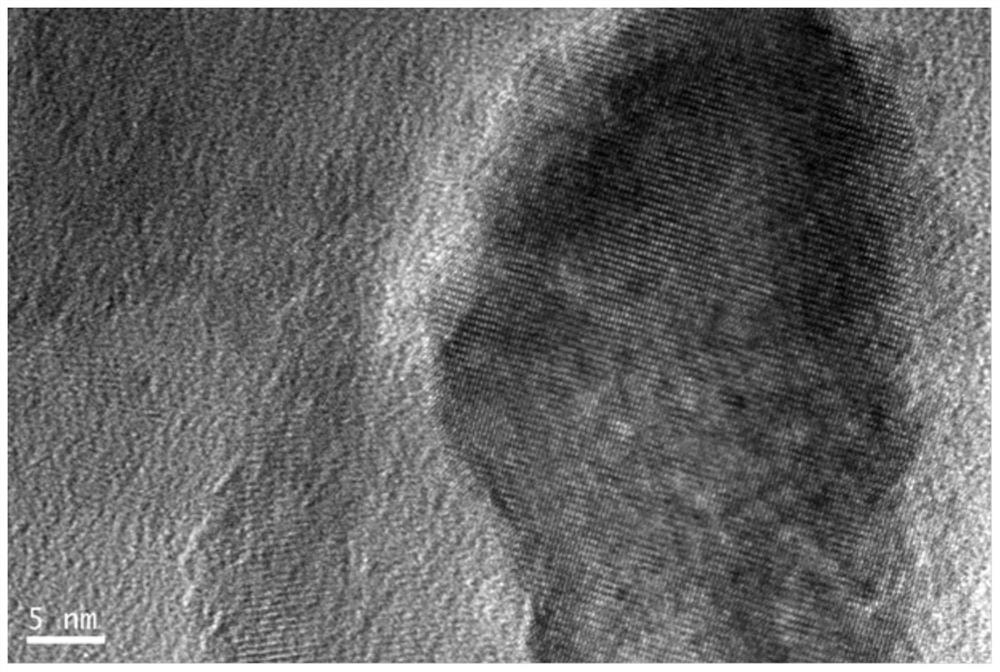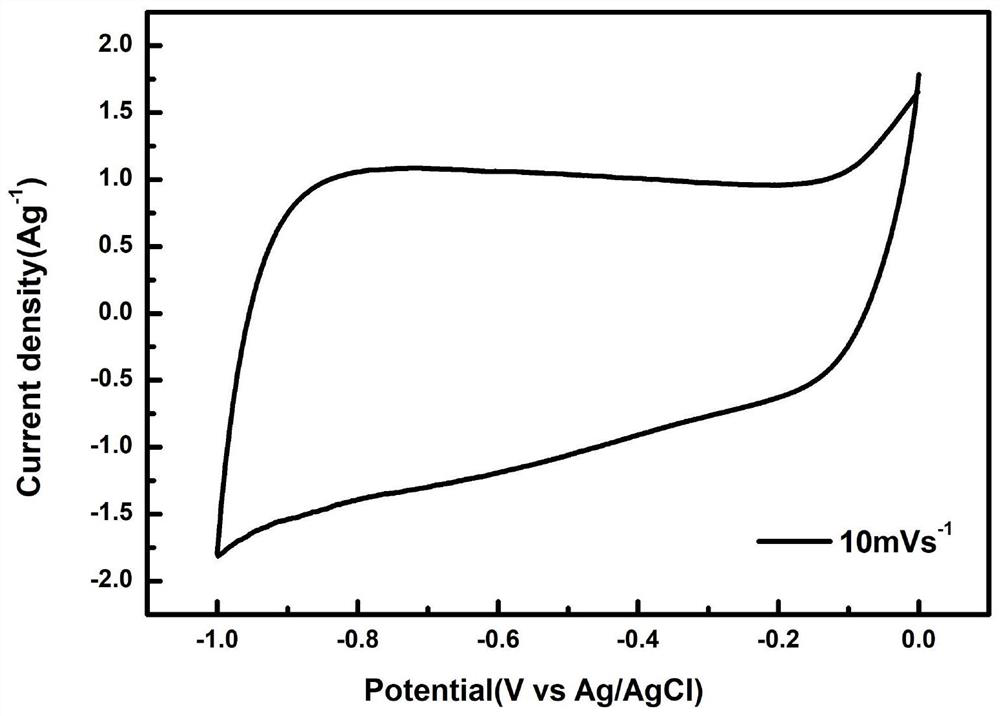Cellulose-based SiO2-C composite material as well as preparation and application thereof
A composite material, cellulose-based technology, applied in the field of supercapacitor electrode material preparation, can solve the problems of difficulty in controlling the morphology and structure of biomass-based carbon materials, poor conductivity of supercapacitors, hindering electron transfer efficiency, etc., so as to reduce electron transport. Impedance, increased capacitance, cost saving effect
- Summary
- Abstract
- Description
- Claims
- Application Information
AI Technical Summary
Problems solved by technology
Method used
Image
Examples
preparation example Construction
[0037] A cellulose-based SiO 2 -The preparation method of composite material, described preparation method specifically comprises the following steps:
[0038] (1) Get cellulose and phenol to join in the acid solution and carry out liquefaction, obtain liquefaction liquid;
[0039] (2) After adjusting the ph of the liquefied liquid obtained in step (1) to alkaline, add SiO 2 , heated in a water bath to obtain a precursor;
[0040] (3) The precursor obtained in step (2) is suction-filtered and washed, dried, and then pre-carbonized to obtain a crude product;
[0041] (4) Mix the crude product obtained in step (3) with lye evenly, continue to calcine after drying, and then obtain the target product SiO 2 -C composites.
[0042] In step (1), the acid solution is composed of sulfuric acid and phosphoric acid, the volume ratio of sulfuric acid and phosphoric acid is 1:2, the mass volume ratio of cellulose powder and phenol is 10g:30ml, the liquefaction process uses oil bath mag...
Embodiment 1
[0049] A cellulose-based SiO 2 -The preparation method of composite material, comprises the following steps:
[0050] 1) Take 10g of cellulose powder and 30ml of phenol, add 1ml of sulfuric acid and 2ml of phosphoric acid, and then liquefy under acidic conditions. The liquefaction process is heated by magnetic stirring in an oil bath at a temperature of 150°C for 3 hours;
[0051] 2) Adjust the ph of the liquefied liquid in step (1) to 9-14 with sodium hydroxide solution, and then add SiO 2 Perform a heating reaction in a water bath to obtain the precursor, the temperature is 70°C, and the reaction time is 3h;
[0052] 3) Wash the precursor obtained in step (2) with acetone and deionized water, and then place it in a vacuum drying oven to dry after suction filtration. The temperature of the drying process is 80 ° C, and the time is 10 h. The product is carried out under nitrogen atmosphere, the heating rate is 5°C / min, the pre-carbon temperature is 500°C, and the time is 2h;...
Embodiment 2
[0058] A cellulose-based SiO 2 -The preparation method of composite material, comprises the following steps:
[0059] 1) Take 10g of cellulose powder and 30ml of phenol, add 1ml of sulfuric acid and 2ml of phosphoric acid, and then liquefy under acidic conditions. The liquefaction process is heated by magnetic stirring in an oil bath at a temperature of 170°C for 2 hours;
[0060] 2) Adjust the ph of the liquefied liquid in step (1) to 9-14 with sodium hydroxide solution, and then add SiO 2 Perform a heating reaction in a water bath to obtain the precursor, the temperature is 70°C, and the reaction time is 3h;
[0061] 3) Wash the precursor obtained in step (2) with acetone and deionized water, and then place it in a vacuum drying oven to dry after suction filtration. The temperature of the drying process is 80 ° C, and the time is 10 h. The product is carried out under nitrogen atmosphere, the heating rate is 5°C / min, the pre-carbon temperature is 500°C, and the time is 2h;...
PUM
 Login to View More
Login to View More Abstract
Description
Claims
Application Information
 Login to View More
Login to View More - R&D
- Intellectual Property
- Life Sciences
- Materials
- Tech Scout
- Unparalleled Data Quality
- Higher Quality Content
- 60% Fewer Hallucinations
Browse by: Latest US Patents, China's latest patents, Technical Efficacy Thesaurus, Application Domain, Technology Topic, Popular Technical Reports.
© 2025 PatSnap. All rights reserved.Legal|Privacy policy|Modern Slavery Act Transparency Statement|Sitemap|About US| Contact US: help@patsnap.com



